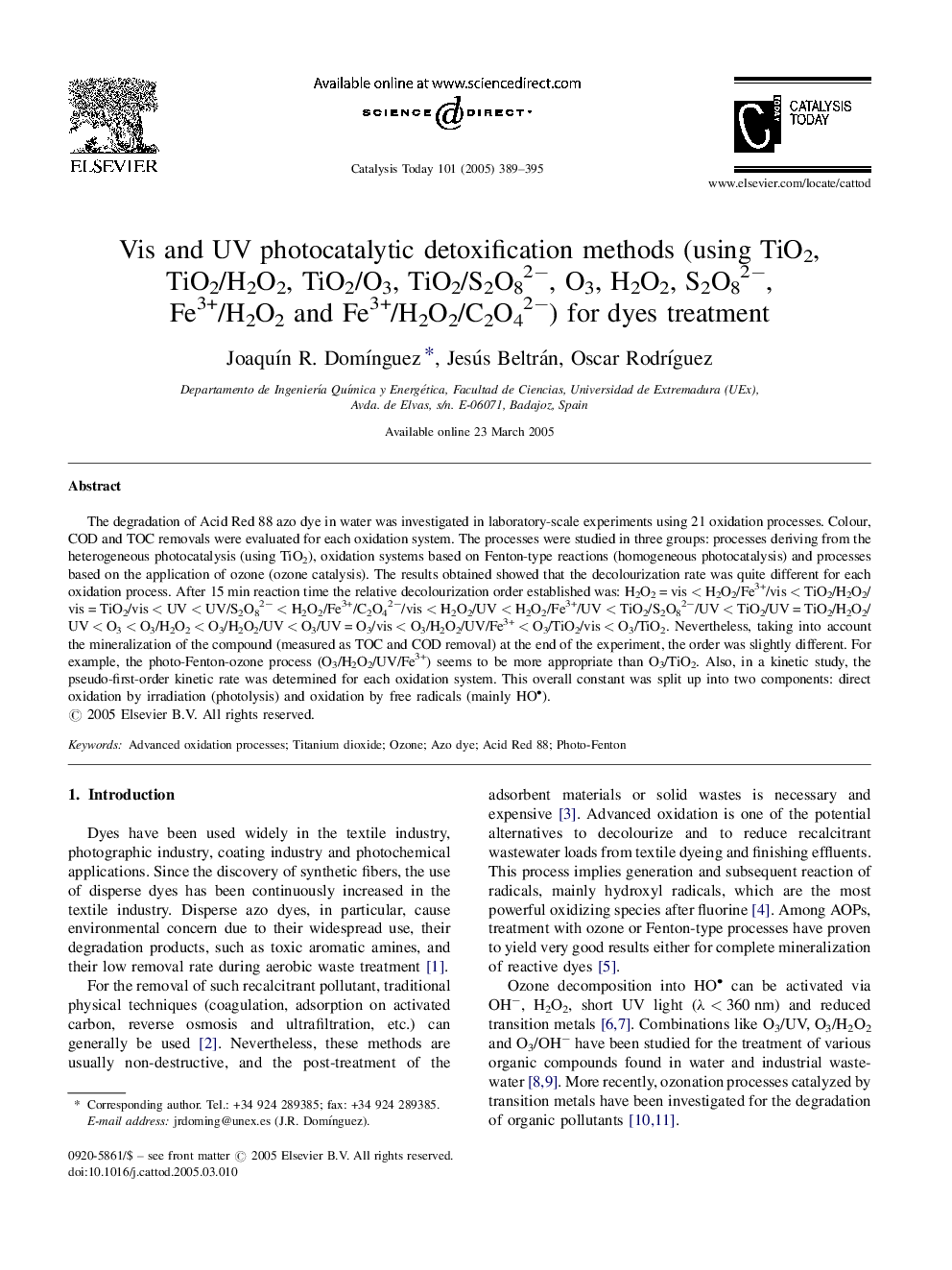| Article ID | Journal | Published Year | Pages | File Type |
|---|---|---|---|---|
| 9610484 | Catalysis Today | 2005 | 7 Pages |
Abstract
The degradation of Acid Red 88 azo dye in water was investigated in laboratory-scale experiments using 21 oxidation processes. Colour, COD and TOC removals were evaluated for each oxidation system. The processes were studied in three groups: processes deriving from the heterogeneous photocatalysis (using TiO2), oxidation systems based on Fenton-type reactions (homogeneous photocatalysis) and processes based on the application of ozone (ozone catalysis). The results obtained showed that the decolourization rate was quite different for each oxidation process. After 15 min reaction time the relative decolourization order established was: H2O2 = vis < H2O2/Fe3+/vis < TiO2/H2O2/vis = TiO2/vis < UV < UV/S2O82â < H2O2/Fe3+/C2O42â/vis < H2O2/UV < H2O2/Fe3+/UV < TiO2/S2O82â/UV < TiO2/UV = TiO2/H2O2/UV < O3 < O3/H2O2 < O3/H2O2/UV < O3/UV = O3/vis < O3/H2O2/UV/Fe3+ < O3/TiO2/vis < O3/TiO2. Nevertheless, taking into account the mineralization of the compound (measured as TOC and COD removal) at the end of the experiment, the order was slightly different. For example, the photo-Fenton-ozone process (O3/H2O2/UV/Fe3+) seems to be more appropriate than O3/TiO2. Also, in a kinetic study, the pseudo-first-order kinetic rate was determined for each oxidation system. This overall constant was split up into two components: direct oxidation by irradiation (photolysis) and oxidation by free radicals (mainly HO).
Related Topics
Physical Sciences and Engineering
Chemical Engineering
Catalysis
Authors
JoaquÃn R. DomÃnguez, Jesús Beltrán, Oscar RodrÃguez,
